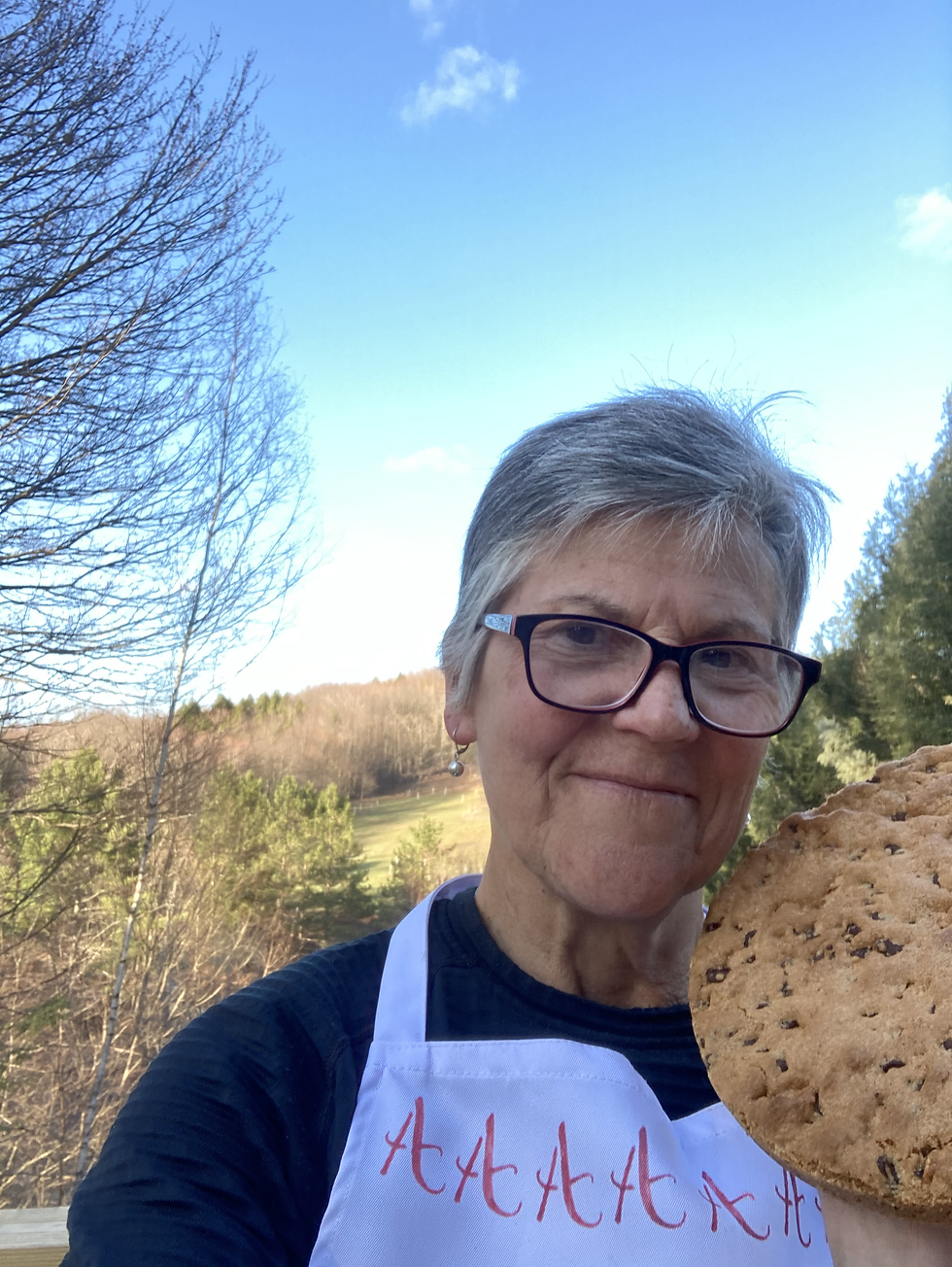Food: The Perfect Literary Ingredient
- staceywilkins
- Apr 7, 2021
- 3 min read
Updated: Apr 8, 2021
By Ann Neary, Staples High School, Westport, Connecticut

Manju bun. The Wizard Bakery in the story sells a "forget-me-not" manju.
I am, at heart, a foodie. I think about my next meal as I am eating the one in front of me. I cannot imagine not spending time to find the best Pink Lady apples in the overflowing apple bin at the market. So, when it comes to getting to know my students when a semester begins, one of the survey questions I ask them is, “What is a food you cannot live without?”. The results provide conversation starters and connections for the length of a semester and beyond.
Making connections and building relationships is particularly important during this unusual teaching year when I have 12 students physically in front of me and another 14 behind me on a Zoom screen. It is always important when teaching literature from diverse cultures such as those we visit in World Literature.
As I prepare for my class, I wonder what potential pitfalls might my students face when analyzing text? What sort of questions might I ask to challenge their thinking about literature and culture? How might I support student inquiry? My guiding and compelling “why” for offering selections of literature from around the world, is how do we value the “tapestry of the human condition”? How do we reduce prejudice and bias? How do I make literature the passport to the world?
Essential questions for all units of study ask: what are the points of commonality we notice between different works of literature and people? Where does it diverge? How do we honor all voices and cultures?
One of the points of commonality is food. We all eat. We all have foods we like and love. Writers write about food, students talk about food. One of my go-to sources of literature for easy student access (especially in a hybrid setting) is WordsWithoutBordersCampus. There I found a marvelous YA fantasy story from South Korea called Wizard Bakery, written by Koo Byung-Mo and translated from Korean by Jamie Chang. It opens like so:
The Devil’s Cinnamon Cookies.
2 per serving.
9000 won.
Ingredients: flour, cinnamon, brown sugar, raisins, and a secret extract. The essence of the extract will not be revealed, as certain ingredients may be found revolting. (Baker’s note: Extract contains no known allergens, so not to worry. Besides, you’re not going to eat it yourself!)
Product Details: Give the cookie to someone you don’t like. The cookie will mentally incapacitate the recipient for an average of two hours so that the person will fail in all endeavors, no matter what they may be. If recipient is giving an important presentation or making a speech, subjects and predicates will not match. Recipient will ramble and appear idiotic to anyone present. If consumed on a full stomach, recipient may fail to control a bowel movement. If consumed on an empty stomach, recipient will experience continuous vomiting. Legends say that one infamous lawyer who ate this cookie during court recess was thrown out of court and disbarred!
Students are hooked immediately A few paragraphs in, students read about the other best-selling food items offered such as the Broken-heart Pineapple Madeleine that helps heal broken hearts faster but might not be a good choice because it may cause you to get into a meaningless rebound relationship. This point gives rise to a wonderful writing prompt where students can mimic the style and concepts themselves. My favorites included:
Cookie Crumbles: a cookie made with all sorts of cookie dough jumbled in one delicious, gigantic cookie. It will take so long to eat such deliciousness that students will forget all about college acceptances and rejections.
COVID Custard: present this creamy delight to your grannie or anyone without teeth or over the age of 65. It will protect them from contracting COVID-19 and allow them visitation rights to your house so they can make some real desserts.
Food brought them into the conversation about literature from another country. But their thinking as they read expanded into recognition that there are many commonalities across the human experience that unite us more than separates us. And that was as I hoped it would be.
Click here to watch Ann’s Wizard Bakery workshop.
This post was featured in our ICTE spring newsletter. Check out the full newsletter!

Ann Neary is a National Board Certified Teacher, 16 year educator and teacher leader, currently teaching AP Literature, World Literature, Children’s Literature, Contemporary Literature and Journalism while shaking up the book room and curriculum at Staples High School in Westport, CT for equity and justice. She is a teacher and student advocate, always sharing, always optimistic. When not teaching, she can be found outdoors in the forest or baking magical cookies.






Fusionfoodsa offers a delicious blend of traditional and modern South Asian flavors, serving fresh and authentic dishes. Perfect for anyone searching for "Halal Desi Food Near Me" it brings vibrant tastes and quality ingredients to your table. Enjoy a true culinary experience that satisfies every craving.
Hussain Catering offers a wide variety of freshly prepared dishes, from flavorful Chicken Entrees to traditional specialties, perfect for any occasion. With a focus on quality, taste, and exceptional service, they ensure every event is memorable.
Deccan Delights USA brings authentic Deccan Flavors to your doorstep with a curated selection of traditional Indian sweets, snacks, and festive treats crafted with heritage and heart.
Karachi Kitchen Authentic flavors for true food lovers!